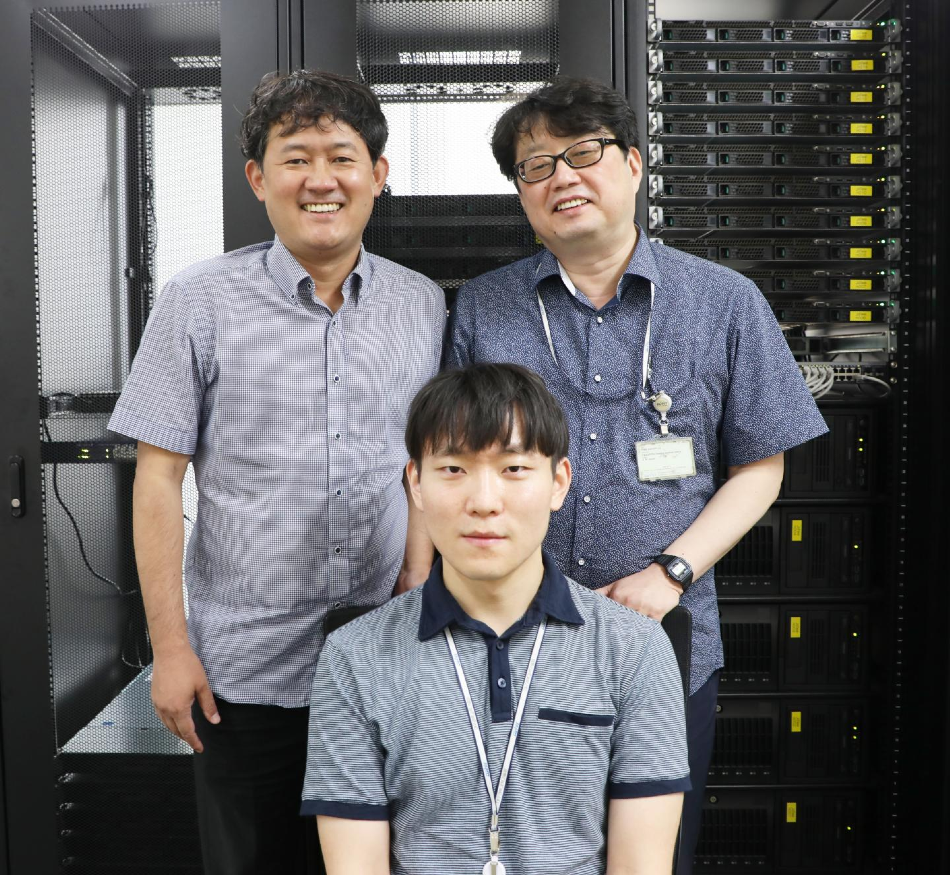Jul 13 2020
Photonics can be defined as the science of exploiting light. It has numerous applications in contemporary electronics, like health-based devices, semiconductors, and information technology.
 Dr Hyunmin Kim (left; Senior researcher, Division of Biotechnology of DGIST), Prof J.D. Lee (right; Professor, Department of Emerging Materials Science of DGIST), and Dr Youngjae Kim (front; Researcher, Professor J.D. Lee’s group). Image Credit: Daegu Gyeongbuk Institute of Science and Technology.
Dr Hyunmin Kim (left; Senior researcher, Division of Biotechnology of DGIST), Prof J.D. Lee (right; Professor, Department of Emerging Materials Science of DGIST), and Dr Youngjae Kim (front; Researcher, Professor J.D. Lee’s group). Image Credit: Daegu Gyeongbuk Institute of Science and Technology.
Therefore, scientists across the world have been working to identify innovative methods to drive developments in the area of photonics. However, the difficulty lies in improving the “photon generation” process as required, which is very important for all applications based on photonics.
In a new research published in the Nano Letters journal, a research team from Daegu Gyeongbuk Institute of Science and Technology (DGIST), under the guidance of Professor J. D. Lee, designed an innovative mechanism to increase the efficiency of photon conversion in two-dimensional (2D) materials.
The researchers accomplished this feat by analyzing a technique known as “nonlinear second-harmonic generation” (SHG)—a kind of optical process in which interactions occur between a nonlinear material and two photons with the same level of frequency. Following this, a new photon that has double the energy is produced, thereby resulting in frequency doubling.
The efficient generation of photons is a crucial part of developing photonic devices. In our study, we developed an ultrafast process of photon conversion in an atomistic-layer material to innovate photonics-based applications.
Researchers, Daegu Gyeongbuk Institute of Science and Technology
In their analysis, the researchers worked on tungsten diselenide (WSe2)—a 2D material—because of its fascinating band properties. For example, this material contains numerous “resonant points” that sensitively react to the absorption of light particles known as “photons.”
We focused on this feature of WSe2 and revealed a new process to convert the ‘color’ in photons through the maximized dual resonant mode.
J. D. Lee, Study Lead Author and Professor, Department of Emerging Materials Science, Daegu Gyeongbuk Institute of Science and Technology
On the basis of SHG, the scientists suggested a new technique known as “dual-resonant optical sum frequency generation” (SFG), in which they chose a couple of resonant points in WSe2 referred to as A and D excitons, respectively.
With the help of this technique, the researchers observed that when the WSe2 material is irradiated with a pair of excitation pulses (ω1 and ω2)—with one of the two pulses (ω1) being adjusted to A exciton and their sum frequency (ω1 + ω2) being tuned to the D exciton—the signal is higher by 20 times when compared to the single-resonant mode.
Added to this, the intensity that was created by this technique was seen to be higher by one order of magnitude than SHG under similar conditions. Such findings were subsequently validated through a range of methods, such as optical experiments and density functional theory, added Professor Lee.
Our proposed dual-resonant SFG method provides new scientific insights into not only nonlinear spectroscopic and microscopic methods but also nonlinear optics and technology using two-dimensional semiconductors.
J. D. Lee, Study Lead Author and Professor, Department of Emerging Materials Science, Daegu Gyeongbuk Institute of Science and Technology
Such findings hold excellent prospects for developing next-generation photonic devices.
“Our study can potentially take photonics-based applications to the next level—for example, cheaper diagnostic methods through better optical imaging instruments in the near future,” concludes Professor Lee.
Journal Reference:
Kim, Y., et al. (2020) Dual Resonant Sum Frequency Generations from Two-Dimensional Materials. Nano Letters. doi.org/10.1021/acs.nanolett.0c01363.